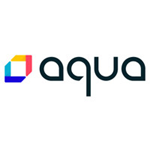Aqua Security Collaborates with CIS to Create the First
BOSTON, June 22, 2022 (GLOBE NEWSWIRE) — Aqua Security, the leading pure-play cloud native security provider, and the Center for Internet Security (CIS), an independent, nonprofit organization with a mission to create confidence in the connected world, today released the industry’s first formal guidelines for software supply chain security. Developed through collaboration between the two organizations, the CIS Software Supply Chain Security Guide provides more than 100 foundational recommendations that can be applied across a variety of commonly used technologies and platforms. In addition, Aqua Security unveiled a new open source tool, Chain-Bench, which is the first and only tool for auditing the software supply chain to ensure compliance with the new CIS guidelines.
Establishing Best Practices for Software Supply Chain Security
Although threats to the software supply chain continue to increase, studies show that security across development environments remains low. The new guidelines establish general best practices that support key emerging standards like Supply Chain Levels for Software Artifacts (SLSA) and The Update Framework (TUF) while adding foundational recommendations for setting and auditing configurations on the Benchmark-supported platforms.
Within the guide, recommendations span five categories of the software supply chain, including Source Code, Build Pipelines, Dependencies, Artifacts, and Deployment (link to blog with overview).
CIS intends to expand this guidance into more specific CIS Benchmarks to create consistent security recommendations across platforms. As with all CIS guidance, the guide will be published and reviewed globally. Feedback will help ensure that future platform-specific guidance is accurate and relevant.
“By publishing the CIS Software Supply Chain Security Guide, CIS and Aqua Security hope to build a vibrant community interested in developing the platform-specific Benchmark guidance to come,” said Phil White, Benchmarks Development Team Manager for CIS. “Any subject matter experts that develop or work with the technologies and platforms that make up the software supply chain are encouraged to join the effort…

